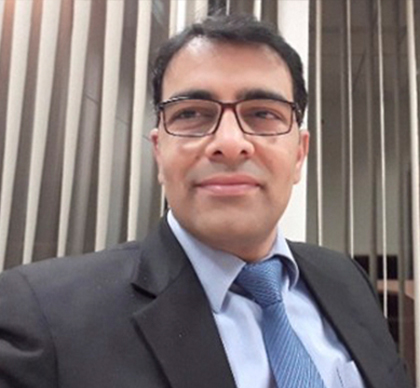Sankshetra’21 aims to provide a dais where the veterans from the industry will interact and reflect with the budding managers on the recent trends and developments in the domain of Operations and Strategy. The Conclave aims to provide the student fraternity at IIM Amritsar with a holistic view of how a cohesive and competitive market responds dynamically to varying conditions.
Sankshetra’21 features two-panel discussions centered around the Operations Strategy and Consulting domains. The first-panel discussion of the Conclave would focus on a critical aspect in the domain of Operations - "Aligning People, Process, and Innovation across the supply chain spectrum". This theme will explore how multiple stakeholders can manage the task of transformation at a supply chain level by overcoming the technical, organization¬ al, and cultural barriers to change.
The second-panel discussion of the Conclave would focus on a critical aspect in the domain of Strategy and Consulting - "Business Strategy on Carbon Neutrality: Next Steps for Sustainable Climate•. This theme aims to explain how business strategies are evolving to accommodate changing business models amidst sustainable goals. outlook.
Many business organizations find moving from a traditional to a technology-enabled supply chain extremely challenging. Transformation is always complex in any aspect of the business. Managing such a transformation at a supply chain level where multiple stakeholders are involved is a difficult task that requires them to overcome all of the typical technical, organizational, and cultural barriers to change.
Modern-day supply chains are still very much human-driven. Smart algorithms may generate faster, more accurate demand forecasts, but acting on those forecasts necessitate the combined effort and alignment of human resource and processes across organizations. In contrast to the stereotypical process of automating ruthlessly, a proper alignment of people, processes, and Innovation is very crucial to leverage supply-chain technology investments and for successful digital transformation across the supply chain.






Business strategies are evolving to accommodate changing business models amidst sustainable goals. With a focus on carbon neutrality and UN SDGs (Sustainable Development Goals), many businesses are evaluating "carbon risk," or the expenses they face as government regulations impose rising prices on CO2 emissions. Moreover, businesses with sustainability in focus are finding ways to calculate their exposure to "climate risk," or the damage they might suffer from heat waves, floods, and other repercussions of global climate change.
These companies are establishing internal carbon pricing (ICP) to put a monetary value on their emissions to better prepare for climate-related uncertainty. Multiple viewpoints on carbon neutrality and net-zero carbon emissions should be integrated with the organization's vision and further align with the organization's long-term sustainable development goals.




